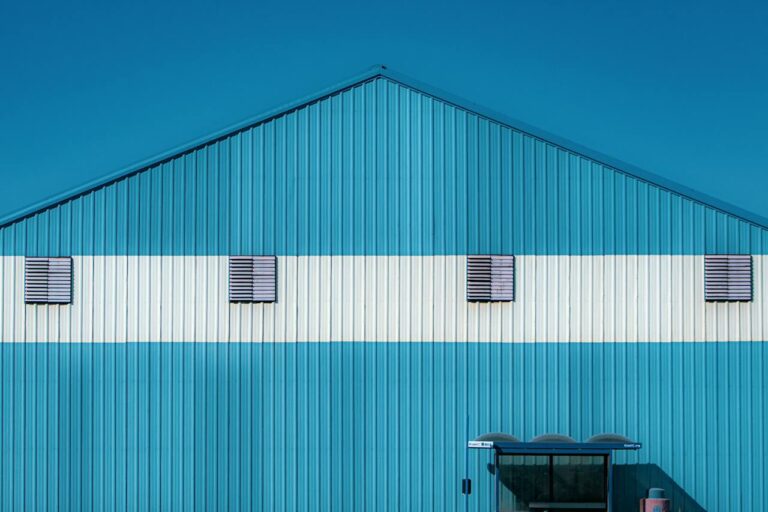BUSINESS & EDUCATION
Eco-Friendly Warehousing: Five Tips for Sustainable Operations

WORDS: Peter Minkoff PHOTOGRAPHY Supplied
In a period where ecological worries are becoming the dominant focal point, organisations across the globe are progressively zeroing in on supportability in each aspect of their activities. The supply chain’s most important link, warehousing, is no exception. Manageable warehousing rehearses add to lessening ecological effects as well as can further develop productivity and cost-viability. In this article, we will investigate five fundamental sustainable warehousing tips to assist organisations with building greener, more socially conscious processes.
Energy-Efficient Lighting
Stockroom lighting is in many cases a critical supporter of energy utilisation. Traditional high-intensity discharge (HID) lighting frameworks can be supplanted with energy-productive LED lighting. LED lights consume less energy as well as have a more extended life expectancy, diminishing the recurrence of substitutions and wastage.
Consider installing motion sensors and smart lighting controls to further enhance sustainability. These frameworks can naturally change lighting levels given inhabitance, guaranteeing that lights are just on when required. This recovers energy as well as adds to a more agreeable and useful workspace for stockroom staff.
Green Packaging Materials
In the mission for maintainability, organisations ought to likewise focus on the materials utilised for packaging and transportation. Choose eco-friendly packaging options like reusable containers, biodegradable plastics, and recycled cardboard. These materials lessen squandering as well as pass a positive picture on to naturally cognizant clients.
Adopt a policy of responsible packaging and collaborate with suppliers to reduce excessive packaging. The use of plastic wraps should be reduced, bulk packaging should be used whenever possible, and the supply chain should encourage the return and reuse of packaging materials. By going with manageable decisions in bundling, companies can add to a more round economy and lessen their natural effect.
Sustainable Equipment Choices
Choosing the right gear is the most vital move toward building a manageable stockroom. For instance, premium electric forklifts for sale in Australia can be an excellent choice to kickstart your sustainability efforts. These electric forklifts are intended to run on clean energy sources, lessening emanations and clamour contamination inside the distribution centre. In addition, they require less upkeep contrasted with their diesel or internal combustion partners, meaning long-haul cost reserve funds.
Putting resources into electric forklifts lines up with Australia’s developing obligation to sustainability. The nation has been taking critical steps in advancing green advancements and decreasing carbon impressions. By choosing green equipment, organisations add to these endeavours as well as an advantage from government motivators and tax reductions, making the progress to supportable gear all the more monetarily feasible.
Efficient Storage Systems
Distribution centre design and capacity frameworks assume a critical part in feasible warehousing. An upgraded stockpiling framework diminishes the requirement for exorbitant floor space, limiting the energy expected for lighting, warming, and cooling. High-density storage options like automated vertical storage systems or compact shelving units can help make the most of available space.
Besides, consider executing a “first in, first out” (FIFO) stock administration framework. This guarantees that more established stock is utilised before fresher stock, decreasing the gamble of item out-of-date quality and waste. By carrying out a proficient stockpiling framework and stock administration methodology, businesses can limit asset wastage and lower their carbon impression.
Continuous Monitoring and Improvement
Manageability in warehousing is not a one-time exertion but a continuous cycle. Execute a framework for checking and estimating key sustainability measurements, like energy utilisation, squandering, and fossil fuel byproducts. Routinely survey and examine this information to distinguish regions for development.
Draw in workers in maintainability drives by giving preparation and motivators to take on eco-accommodating practices. Support input from staff, as they frequently have important bits of knowledge into recognising potential open doors for green upgrades.
To validate your sustainability efforts, you might also want to look into obtaining certifications from a third party, such as LEED (Leadership in Energy and Environmental Design) or ISO 14001. These affirmations can upgrade your company’s standing and exhibit your obligation to natural conservation to clients, accomplices, and partners.
In conclusion, environmentally conscious warehousing is no longer a choice; it’s turning into a need for organisations hoping to flourish in an eco-cognizant world. By following the advice mentioned above, businesses can decrease their natural effect while receiving the rewards of cost reserve funds and a positive brand picture. Embracing supportability in warehousing lines up with worldwide ecological objectives as well as makes way for an additional economic and beneficial future.










